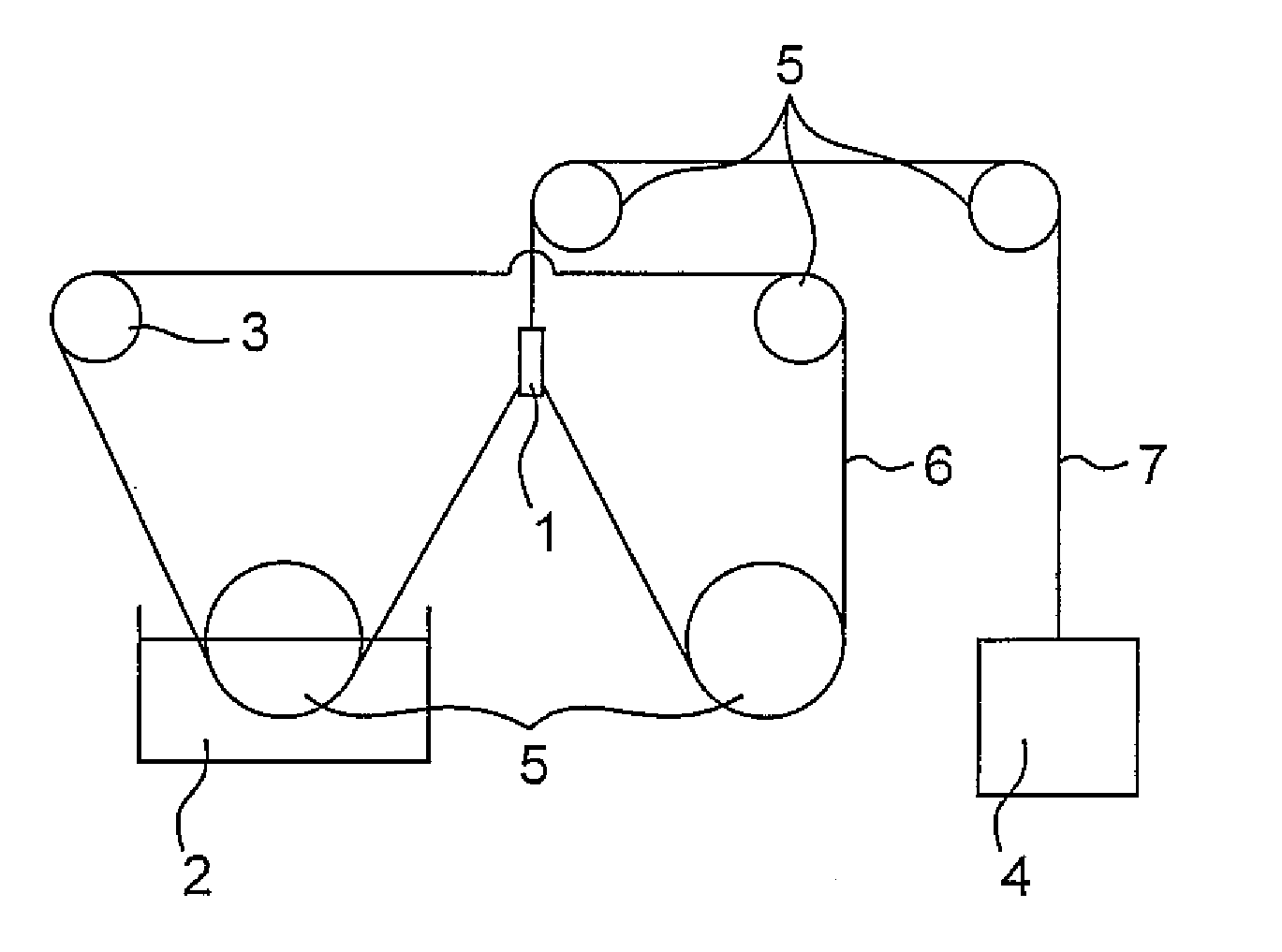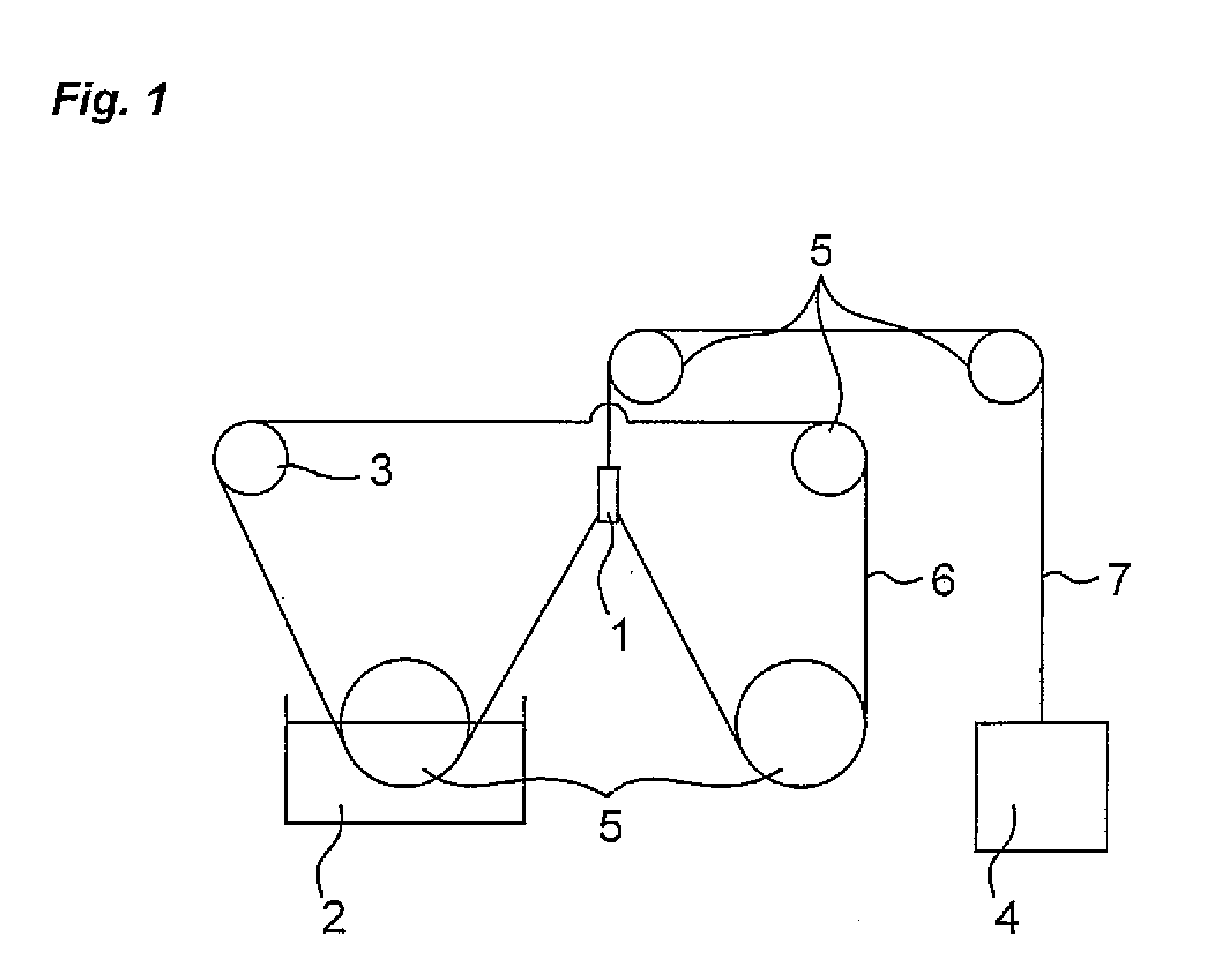Ceramic Sintered Product and Method for Production Thereof, and Decorative Member Using the Ceramic Sintered Product
- Summary
- Abstract
- Description
- Claims
- Application Information
AI Technical Summary
Benefits of technology
Problems solved by technology
Method used
Image
Examples
example 1
[0106] First, a titanium nitride powder (purity 99% or higher, average particle diameter 22.3 μm), a nickel powder (purity 99.5% or higher, average particle diameter 12.8 μm), and either a zirconia powder (purity 99.5% or higher, average particle diameter 1.5 μm) or an alumina powder (purity 99.0% or higher, average particle diameter 1.5 μm) were weighed and mixed properly to obtain starting material mixtures at proper ratios to give ceramic sintered products (hereinafter referred to as sintered products) with the respective component ratios as shown in Table 1. Next, each of the obtained starting material mixture was mixed with an isopropanol solution and pulverized and mixed by a vibration mill for 72 hours and successively 3% by weight of a binder such as paraffin wax was added to the obtained starting material mixture to obtain each dry powder. The obtained powder was pressure-formed at a pressure shown in Table 1 to produce each formed body with a desired circular shape accordi...
example 2
[0119] Similarly to Example 1, a titanium nitride powder (purity 99% or higher, average particle diameter 22.3 μm), a nickel powder (purity 99.5% or higher, average particle diameter 12.8 μm), and either a zirconia powder (purity 99.5% or higher, average particle diameter 1.5 μm) or an alumina powder (purity 99.0% or higher, average particle diameter 1.5 μm) were weighed and mixed properly to obtain starting material mixtures at proper ratios to give ceramic sintered products with the respective component ratios as shown in Table 3. Further, starting material mixtures additionally containing powders of vanadium pentoxide, cobalt oxide, ferric oxide, erbium oxide, and titanium carbide as a coloring component as shown in Table 3 were also prepared. Next, each of the obtained starting material mixtures was mixed with an isopropanol solution and pulverized and mixed by a vibration mill for 72 hours and successively 3% by weight of a binder such as paraffin wax was added to the resulting...
example 3
[0130] One faces of the samples of Nos. 53 to 59 shown in Table 3 were barrel-finished to have the surface arithmetical mean deviation Ra of 0.05 to 0.2 μm and after that, the porosity of the sintering products was measured by Archimedes' method. The pore diameter of the voids was measured by photographing the surface at 400 times magnification and the pore diameter of the largest voids was measured. The appearance was observed with eyes. The results are shown in Table 5.
[0131] In Table 5, the respective marks show as follows: ◯: beautiful gold color; Δ: whitish and dull gold color; and x: a color other than gold color.
TABLE 5PoreSamplePorositydiameterColorDamage of fishingNo.(%)(μm)toneline531>14◯None541>8◯None552.550ΔOccurring563.563ΔOccurring571>50◯None581>27◯None591>20ΔOccurring
[0132] As being understood from Table 5, the samples of Nos. 53, 54, 57 to 59, fired at a firing temperature of 1200 to 1800° C. had the porosity lower than 1% and the pore diameter of 50 μm or smaller...
PUM
| Property | Measurement | Unit |
|---|---|---|
| Grain size | aaaaa | aaaaa |
| Temperature | aaaaa | aaaaa |
| Length | aaaaa | aaaaa |
Abstract
Description
Claims
Application Information
 Login to View More
Login to View More - R&D
- Intellectual Property
- Life Sciences
- Materials
- Tech Scout
- Unparalleled Data Quality
- Higher Quality Content
- 60% Fewer Hallucinations
Browse by: Latest US Patents, China's latest patents, Technical Efficacy Thesaurus, Application Domain, Technology Topic, Popular Technical Reports.
© 2025 PatSnap. All rights reserved.Legal|Privacy policy|Modern Slavery Act Transparency Statement|Sitemap|About US| Contact US: help@patsnap.com


